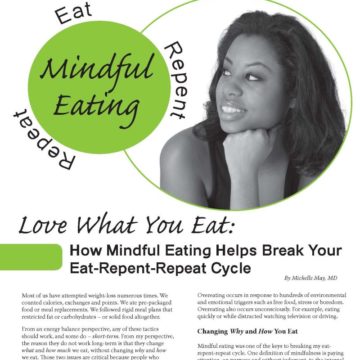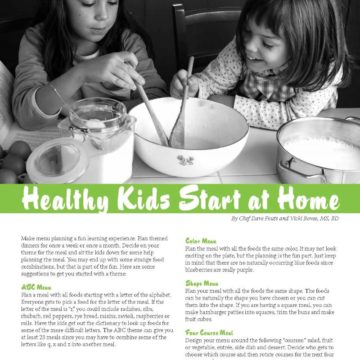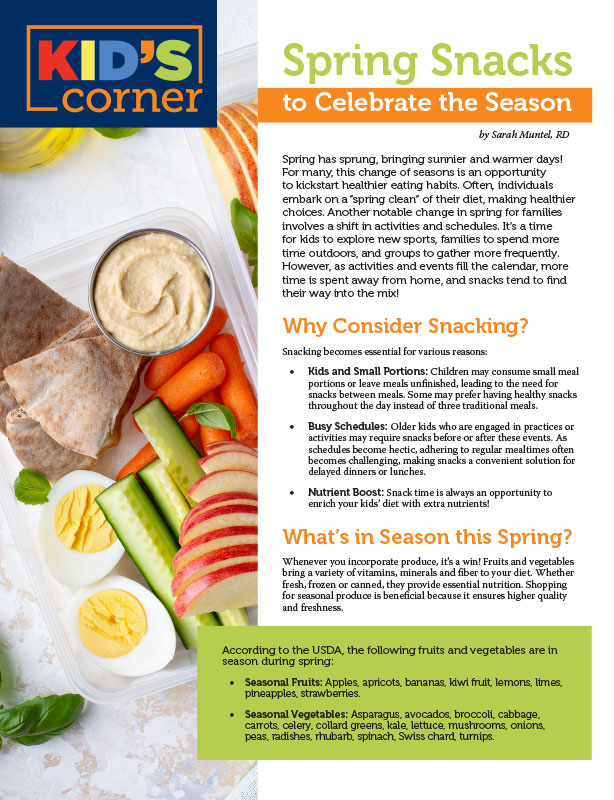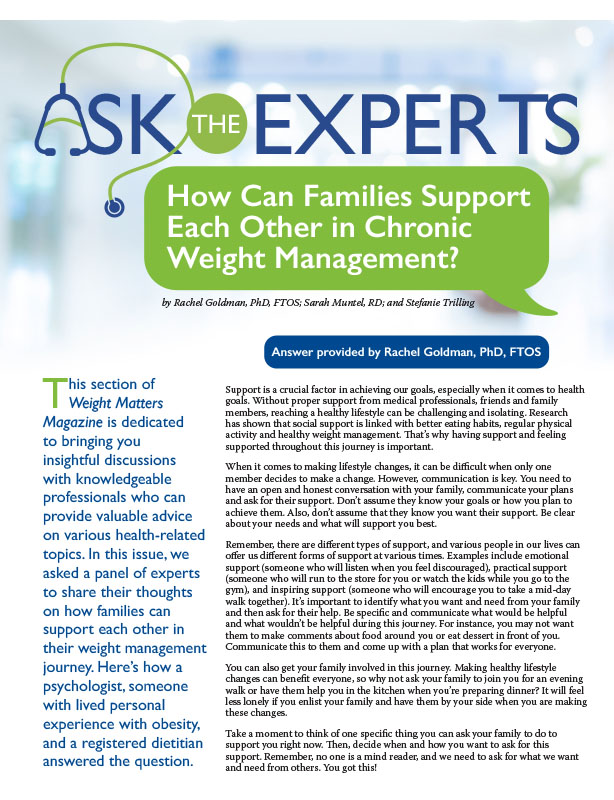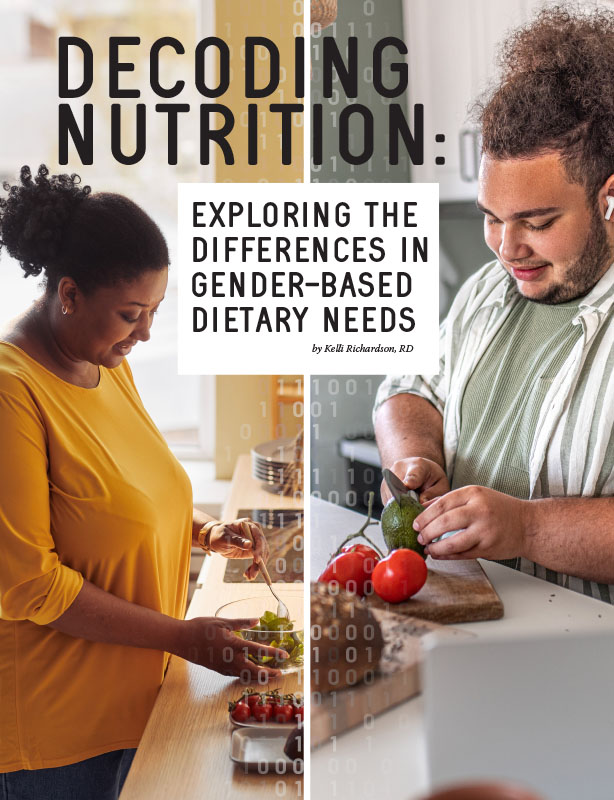Read the Fine Print

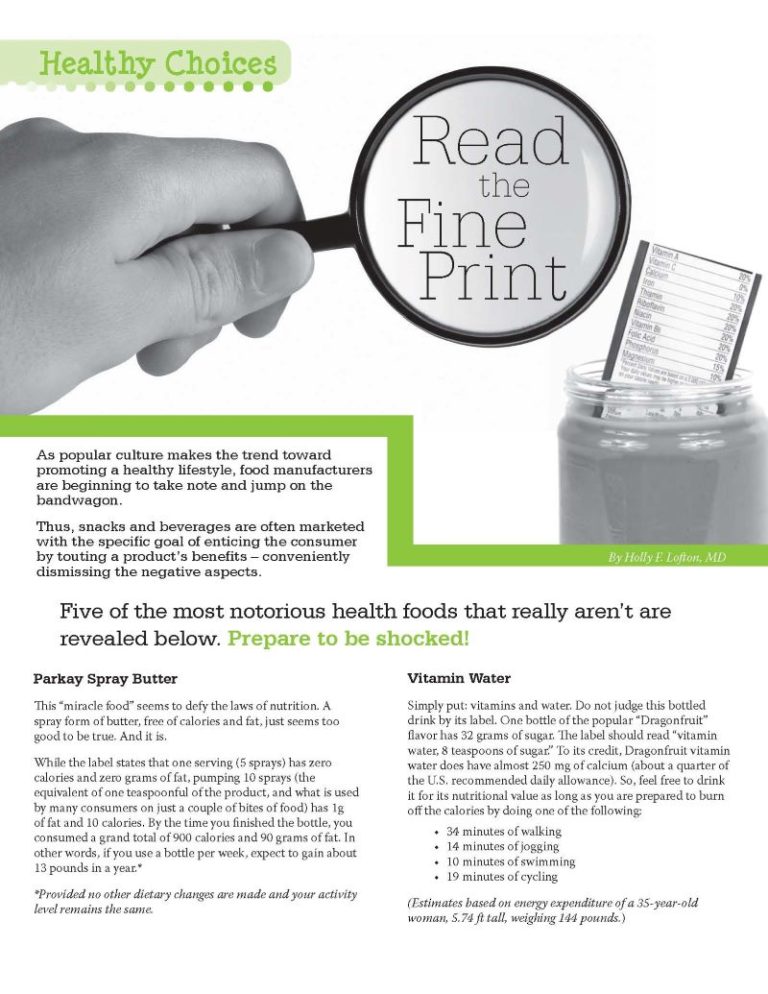
By Holly F. Lofton, MD
Spring 2009
As popular culture makes the trend toward promoting a healthy lifestyle, food manufacturers are beginning to take note and jump on the bandwagon.
Thus, snacks and beverages are often marketed with the specific goal of enticing the consumer by touting a product’s benefits – conveniently dismissing the negative aspects.
Five of the most notorious health foods that really aren’t are revealed below. Prepare to be shocked!
Parkay Spray Butter
This “miracle food” seems to defy the laws of nutrition. A spray form of butter, free of calories and fat, just seems too good to be true. And it is.
While the label states that one serving (5 sprays) has zero calories and zero grams of fat, pumping 10 sprays (the equivalent of one teaspoonful of the product, and what is used by many consumers on just a couple of bites of food) has 1g of fat and 10 calories. By the time you finished the bottle, you consumed a grand total of 900 calories and 90 grams of fat. In other words, if you use a bottle per week, expect to gain about 13 pounds in a year.*
*Provided no other dietary changes are made and your activity level remains the same.
Vitamin Water
Simply put: vitamins and water. Do not judge this bottled drink by its label. One bottle of the popular “Dragonfruit” flavor has 32 grams of sugar. The label should read “vitamin water, 8 teaspoons of sugar.” To its credit, Dragonfruit vitamin water does have almost 250 mg of calcium (about a quarter of the U.S. recommended daily allowance). So, feel free to drink it for its nutritional value as long as you are prepared to burn off the calories by doing one of the following:
- 34 minutes of walking
- 14 minutes of jogging
- 10 minutes of swimming
- 19 minutes of cycling
(Estimates based on energy expenditure of a 35-year-old woman, 5.74 ft tall, weighing 144 pounds.)
Smoothies
You can find these upscale juice stands in just about every neighborhood. The menus abound with fresh ingredients and your choice of additives such as protein powder and “immunity boosters.” The most popular smoothies are better utilized as a meal replacement than as a snack.
While they are prepared with a few ounces of fresh fruit, the smoothie base, which affords the smoothie its fruity flavor (and lots of calories), is often laden with high fructose corn syrup or other forms of simple sugar.
Jamba Juice’s “Banana Berry” in original size has 450 calories – a decent amount for a meal. But, you may want to rethink your liquid lunch when you consider that its major fuel source is 93 grams of sugar. Thus, even the “natural” smoothie is packed with processed, calorie-dense components. For a real treat, mix your own fruit smoothie at home with skim milk and a scoop of whey protein powder.
If you are on the go, steer clear of Jamba Juice’s Peanut Butter Moo’ed (original size – 840 calories, 29 grams of fat, 139 grams of carbs, 122 grams of sugar). Instead, stop by Smoothie King and try the low carb strawberry, which has 225 calories, 64 percent of which are from protein (6 grams carbs, 6 grams fat). If you are fortunate enough to encounter a Tropical Smoothie Café, opt for one of the smoothies prepared with Splenda® and enjoy the fruity taste without the guilt!
Reduced Fat Peanut Butter
You may reminisce about this childhood favorite (usually accompanied by bread and jelly), but have been hesitant to add good ol’ PB&J back to your diet repertoire as an adult for fear of its hefty fat content? Not surprisingly, the major peanut butter producers introduced reduced-fat brands to alleviate your fear. But, beware! The nutrient breakdown of reduced-fat peanut butter is only slightly different than the usual high fat version.
For those who still crave that nostalgic sandwich, opt for a lower fat AND low sugar substitute to avoid ruining your calorie budget.
Fast Food Salads
Waist watchers and calorie counters across the nation were thrilled to see the emergence of healthier meal options at fast food and dine-in restaurants. However, we must not use this as an excuse to abandon the calorie calculations and food diaries that have kept us stable during the hard times.
McDonalds’ popular Caesar salad with grilled chicken is a great option when hunger strikes away from home. It has an astounding 30 grams of protein, only 6 grams of fat, and just 12 grams of carbs – totaling a lowly 220 calories! You can easily jog this meal off in 25 minutes. However, if you add a package (20 oz.) of creamy caesar salad dressing (190 calories and 18 grams of fat), be prepared to double your time on the treadmill.
Just say, “NO!” to this fatty meal wrecker and politely request low-fat Balsamic Vinaigrette (40 calories, 3 grams of fat), which you can burn off with just a 5 minute jog.(Estimates based on energy expenditure of a 35 year old woman, 5.74 ft tall, weighing 144 lbs.)
Conclusion
Succinctly, we must all remember the importance of investigating carefully before we ingest anything. Do not be fooled by bold print and flashy labels. Reading the nutrition label on the back of the package is one of the simplest things we can all do to make wise decisions.
About the Author:
Holly Lofton, MD, is currently a staff physician in Geisinger Center for Nutrition and Weight Management. Her primary interests are improving nutrition and activity profiles for patients with excess weight or obesity.
by Sarah Muntel, RD Spring 2024 Spring has sprung, bringing sunnier and warmer days! For many, this…
Read Articleby Rachel Goldman, PhD, FTOS; Sarah Muntel, RD; and Stefanie Trilling Winter 2024 This section of Weight…
Read Articleby Kelli Richardson, RD You’ve probably heard the generic advice before: Eat your fruits and veggies. Limit…
Read Article




